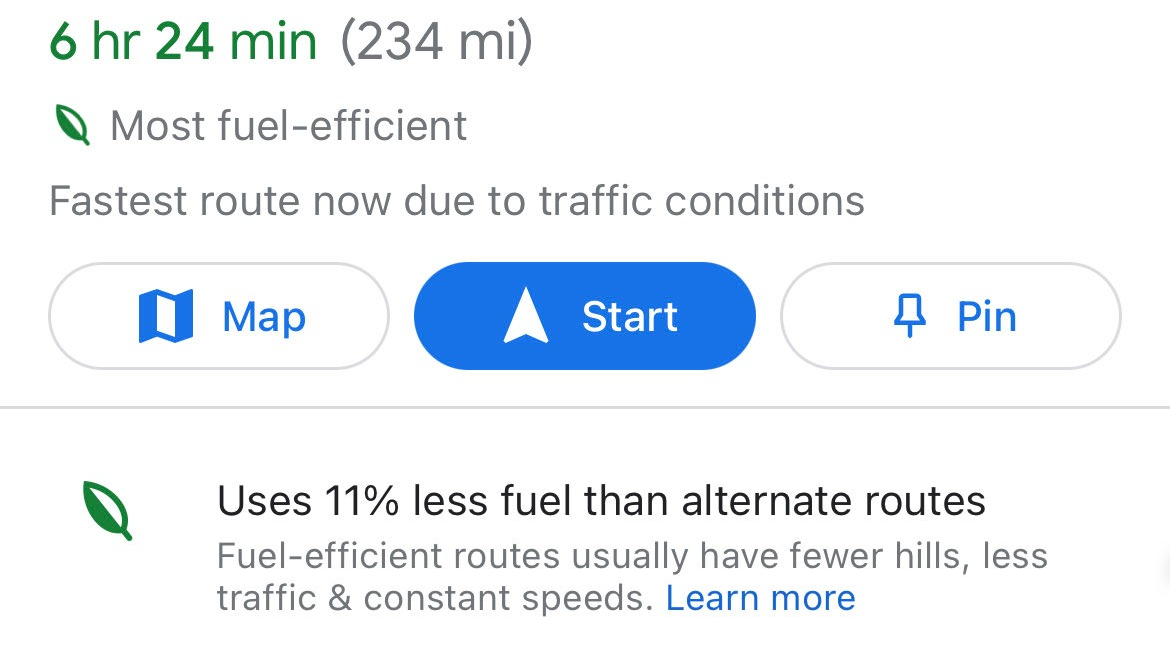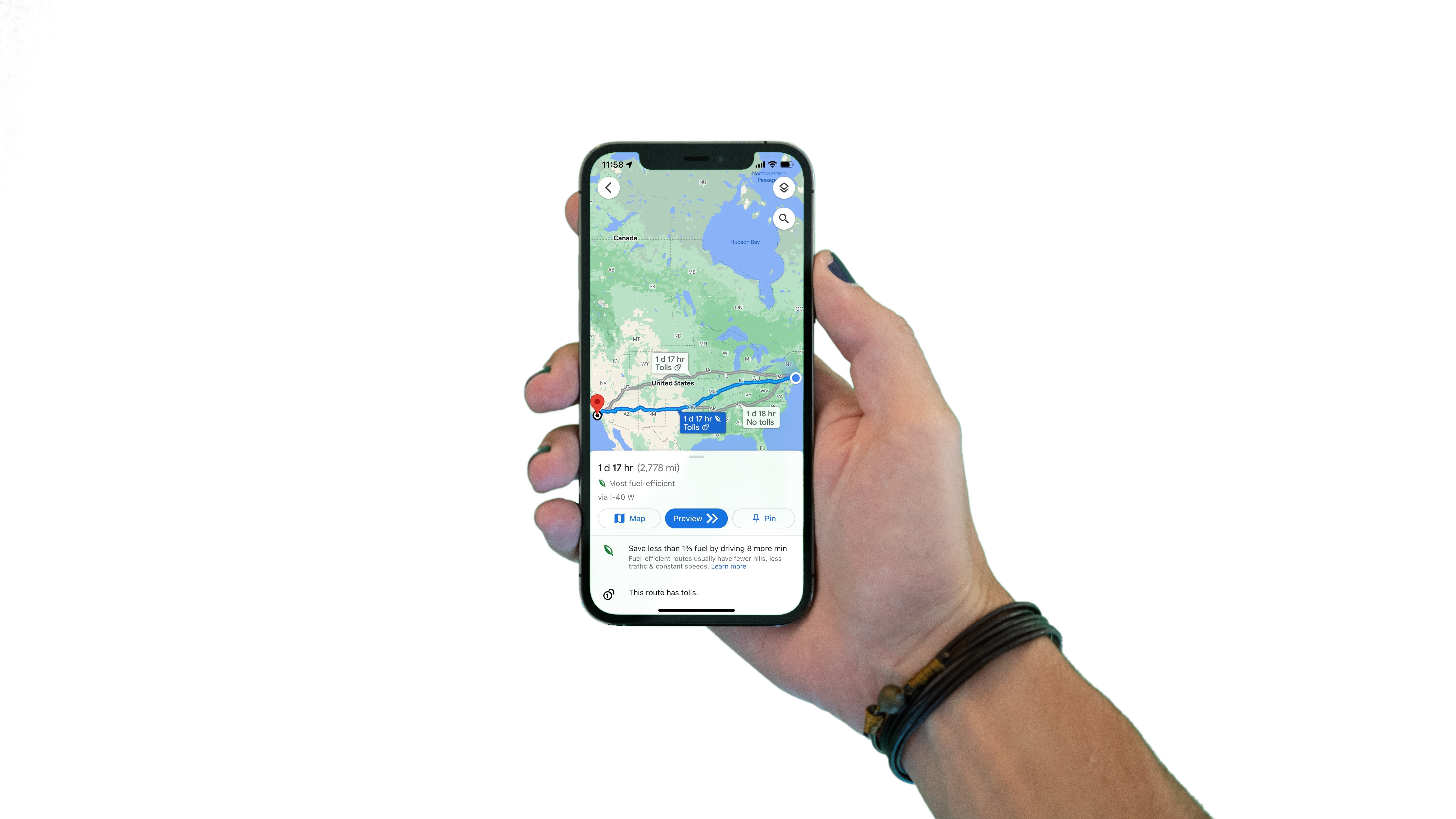Google Maps' 'Eco-Friendly Routing' Expands To Europe
Google also adds an option to select your vehicle's fuel source for more accurate calculations for "trip efficiency."
For about a year now, Google Maps has had the option to serve you an "eco-friendly" route to your destination. If you're making long trips, it's a nice little benefit — saving you a bit of extra fuel on your trip. Now, having proven itself here, the feature is making its way out to cell phones in Europe.
The app update is coming to Google Maps users in 40 European countries, including the UK, France, Spain, and Poland. It even brings with it a new feature, something the U.S. hadn't had: Options to select your vehicle's fuel source, so the routing can optimize based on powertrain.

Of course, one first wonders what "eco-friendly" means in an app built around private transit. Does it take you through as many subways as possible before a rental car, or does it tell you to ditch the crossover and take a train? How does the environment really factor in?
For Google, "eco-friendly" means fuel efficient, and that means highways. In terms of fuel efficiency, they're as good as roads get — no stop lights, no wildly varying speed limits. Just cruise control and the open road.
But, there's a difference between "eco-friendly" and fuel-efficient. Google's new routing is certainly the latter, saving end-users money at the pump, but it may miss out on the former. We've known the environmental impacts of highways for decades, and we know them to be severe — negatively impacting pollution, ecology, and wildlife.
So, yes, Google's "green" routing will help drivers spew fewer hydrocarbons across the European skies. But, to be truly eco-friendly, the company may be barking up the wrong tree.
